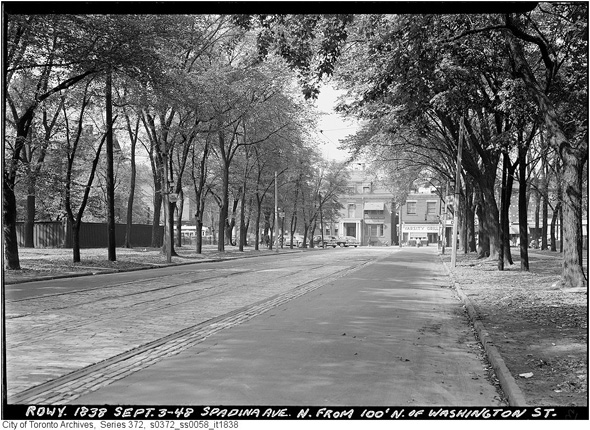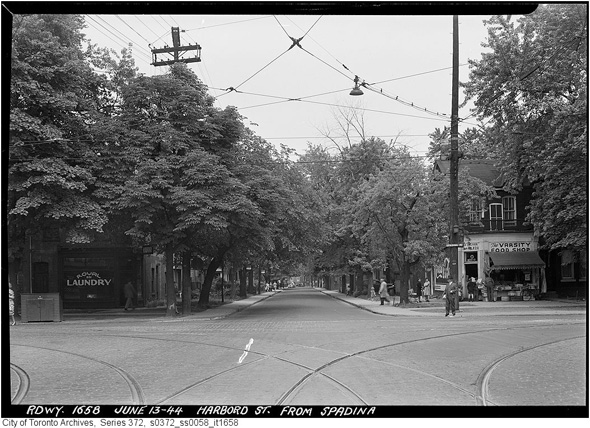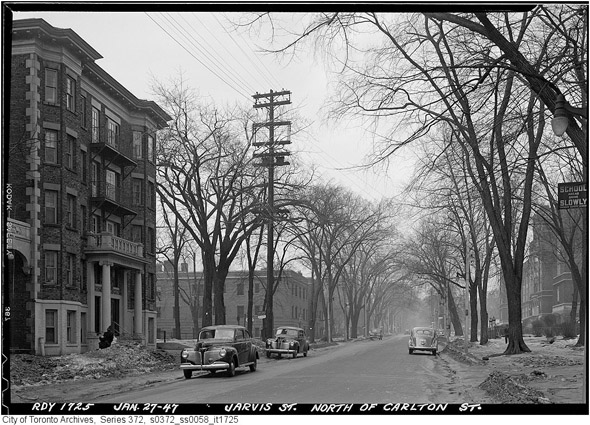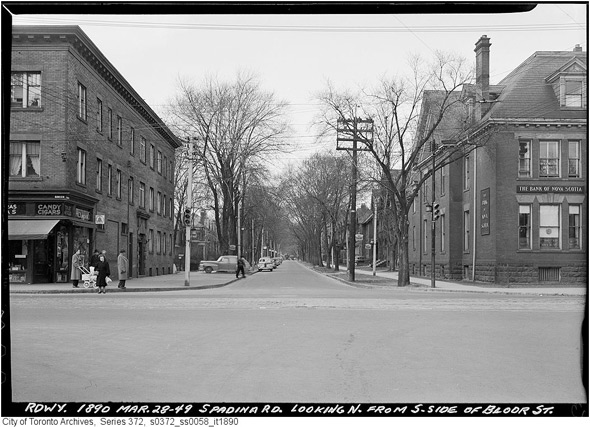A lot of South American (or European) cities have a few monumental roads (but usually not highways - whereas we do), but usually they respected the scale of most of their traditional roads (in the old cities, that is... places that were built from scratch post-WWII have much larger scales everywhere - it's like citing Scarborough as an example of Toronto's wide streets).
Toronto did NOT need to widen most of its roads. Planners chose to subsidise suburbia and skyscrapers and therefore decided to widen roads to ease transportation - even though the commuting patterns they anticipated never came to be. Many cities - like Santiago - opted instead for a network of small roads and mid-rise office towers.
It is very common in Santiago, Mexico City, Buenos Aires, etc. to have tiny one way streets in dense neighbourhoods.
In old Buenos Aires most streets look like this:
And super dense arterials look like this:
In Toronto and North America completely irrelevant downtown streets usually look like this:
https://maps.google.ca/maps?q=toron...0axrC51Zyk3v8PT2RgGIFw&cbp=12,353.21,,0,-4.42
Did we
really need 4 lanes there? My criticism isn't just directed at the widening per se but to the way in which pedestrian spaces were made outrageously unpleasant in the end result.
The point I'm trying to make is that we have long neglected our pedestrian realm and made decisions based on emotional and subjective perceptions of 'what's best'. We unnecessarily widened streets and also unnecessarily built taller and taller towers.
It's time we step back and approve/reject proposals based on the impact that these will have on the quality of life of residents, rather than because we want to outdo Chicago or because we want to drive our cars faster through a neighbourhood. The Jarvis bike-lane fiasco, the casino proposal, etc. show that a lot of people are not ready to prioritise residents over their own interests.
I don't oppose a high-rise at 1 Yonge, but the most important thing is that it has a positive influence in revitalising what is currently a dead part of the city with lots of potential. The height and trippy designs will do very little for the area at that scale.






